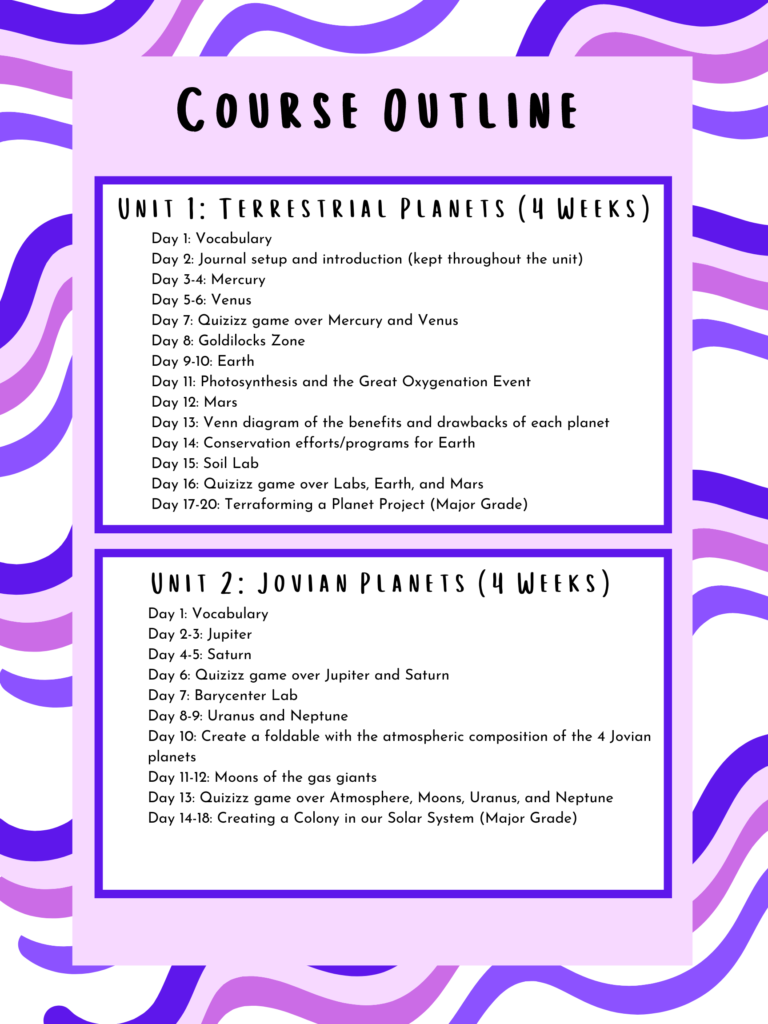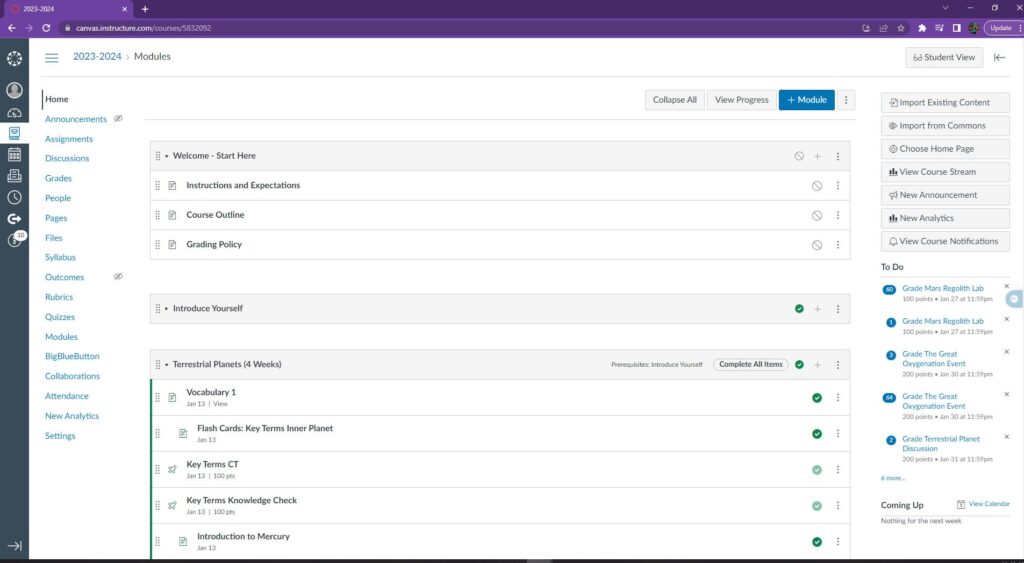Module 1 Assignment – Instructional Design
Instructional Design
As an astronomy teacher in a secondary K-12 setting, my primary goal is to guide 11th and 12th graders through the captivating realm of celestial bodies and the wonders of the universe. I strive to create a comprehensive and engaging learning experience that not only sparks curiosity but also deepens their understanding of astronomy. To achieve this, I employ a combination of theoretical knowledge, practical activities, and interactive discussions that foster a love for the subject and inspire students to explore beyond the confines of our planet. By incorporating innovative teaching methods, such as the COVA model, and promoting a student-centered approach, I aim to establish a dynamic instructional environment that encourages critical thinking, collaboration, and independent exploration. With a specific focus on the vastness and intricacies of the cosmos, my objective is to equip students with the knowledge and skills necessary to appreciate and comprehend the mysteries of our universe.

In line with my student-centered approach, I assume the role of a facilitator rather than a traditional teacher. By incorporating the COVA model and employing various innovative teaching methods, I fulfill different teaching roles, including presenter, facilitator, coach, and mentor. This approach allows for a diverse range of instructional approaches that cater to the unique learning needs of my students. Additionally, by implementing a blended learning format, I ensure that students have ubiquitous access to resources and materials through online platforms. This not only promotes social networking and collaboration but also provides flexibility in instructional delivery by combining face-to-face instruction with online components.
My instructional design primarily aligns with Outcome-Based Education (OBE), which focuses on clearly defined learning outcomes or objectives. Each unit, topic, and activity within my curriculum has predefined outcomes that encompass vocabulary acquisition, studying specific planets, engaging in labs, playing educational games, and working on projects. These outcomes are carefully designed to assess students’ understanding and application of the concepts taught throughout the course. However, it is important to note that while my plan incorporates elements of skill development, such as computational thinking and creating colonies, the overall structure and organization prioritize achieving specific learning outcomes rather than solely focusing on competency development.
To ensure academic quality and standards, I refer to the Texas Essential Knowledge and Skills (TEKS), which provides a foundation by outlining the content standards and learning objectives that students should achieve in astronomy. These standards serve as a roadmap for structuring my curriculum and ensuring coverage of essential topics mandated by the state. Additionally, I consult my district’s year-at-a-glance and district plan, which offer a recommended timeline and sequence for covering key content throughout the academic year. By aligning my instruction with these documents, I can design a comprehensive and targeted curriculum that meets both state and local requirements while providing an enriching and engaging learning experience for my students.
BHAG
To inspire/empower learners school-wide/grade-wide to become self-directed and confident problem solvers to solve real-world challenges.
In terms of support and infrastructure, I recognize the crucial role they play in facilitating effective teaching and learning. As an astronomy teacher, I am committed to providing necessary resources, technology, and a supportive environment to enhance the learning experience. This includes access to digital materials, textbooks, scientific equipment, and engaging hands-on activities that bring the wonders of astronomy to life.
Overall, my approach as an astronomy teacher encompasses a student-centered environment, innovative teaching methods, blended learning, outcome-based instructional design, alignment with academic standards, and the provision of necessary support and infrastructure. By integrating these elements, I aim to create a significant learning environment that empowers students to explore and comprehend the mysteries of the universe while fostering their growth as critical thinkers and lifelong learners.

References:
Fink, L.D. (2003) A Self-Directed Guide to Designing Courses for Significant Learning. San Francisco: Jossey-Bass.
Harapnuik, D. (n.d.). C.O.V.A. COVA Model. Retrieved from https://www.harapnuik.org/?page_id=6615.






3 Comments
Luis Carreon
Hello Davina!
This looks great. I would revisit the permissions of your BHAG, as it is currently restricted.
Everything else is clean and clear; excellent job!
Sarah Eder
Looks like a really solid plan. I would love to sit in this class and learn.
It looks like you have put a lot of intentional thought into ways to have students take ownership of their learning through the unit.
Jennifer
I admire your ability to engage your audience through your writing and draw me into a content area to which I’m unfamilar. I’ve never seen the Canva LMS. I’m interested in learning more about how it integrates with other apps.